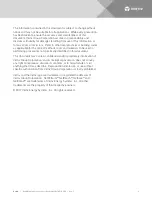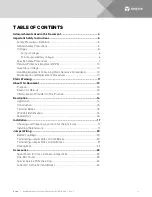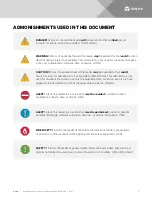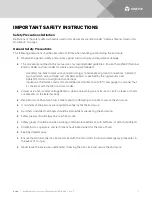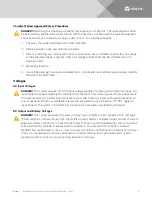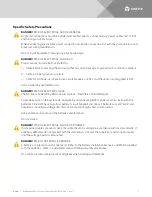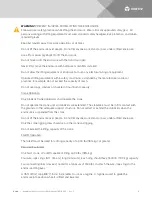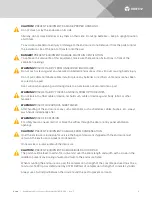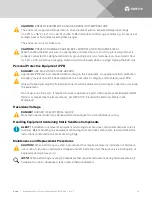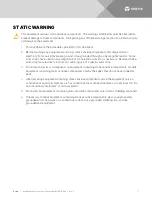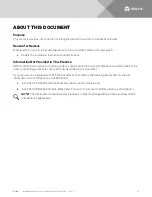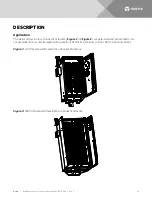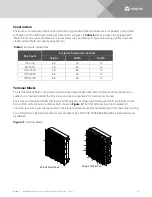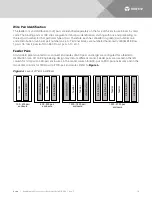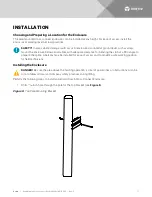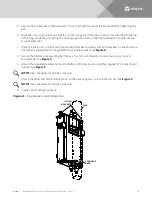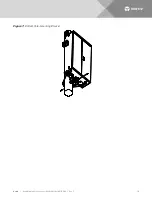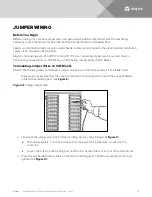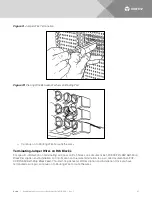
Vertiv
|
Aerial Ultracab Cross-Connect Enclosures (631-201-009)
|
Rev. F
6
You Must Follow Approved Safety Procedures
DANGER!
Performing the following procedures may expose you to hazards. These procedures should
be performed by qualified technicians familiar with the hazards associated with this type of equipment.
These hazards may include shock, energy, and/or burns. To avoid these hazards:
a)
The tasks should be performed in the order indicated.
b)
Remove watches, rings, and other metal objects.
c)
Prior to contacting any uninsulated surface or termination, use a voltmeter to verify that no voltage
or the expected voltage is present. Check for voltage with both AC and DC voltmeters prior to
making contact.
d)
Wear eye protection.
e)
Use certified and well maintained insulated tools. Use double insulated tools appropriately rated for
the work to be performed.
Voltages
AC Input Voltages
DANGER!
This system operates from AC input voltage capable of producing fatal electrical shock. AC
input power must be completely disconnected from the branch circuits wiring used to provide power to
the system before any AC electrical connections are made. Follow local lockout/tagout procedures to
ensure upstream branch circuit breakers remain de-energized during installation. DO NOT apply AC
input power to the system until all electrical connections have been completed and checked.
DC Output and Battery Voltages
DANGER!
This system produces DC power and may have a battery source connected to it. Although
the DC voltage is not hazardously high, the rectifiers and/or battery can deliver large amounts of current.
Exercise extreme caution not to inadvertently contact or have any tool inadvertently contact an output
terminal or battery terminal or exposed wire connected to an output terminal or battery terminal.
NEVER allow a metal object, such as a tool, to contact more than one termination or battery terminal at a
time, or to simultaneously contact a termination or battery terminal and a grounded object. Even a
momentary short circuit can cause sparking, explosion, and injury.


